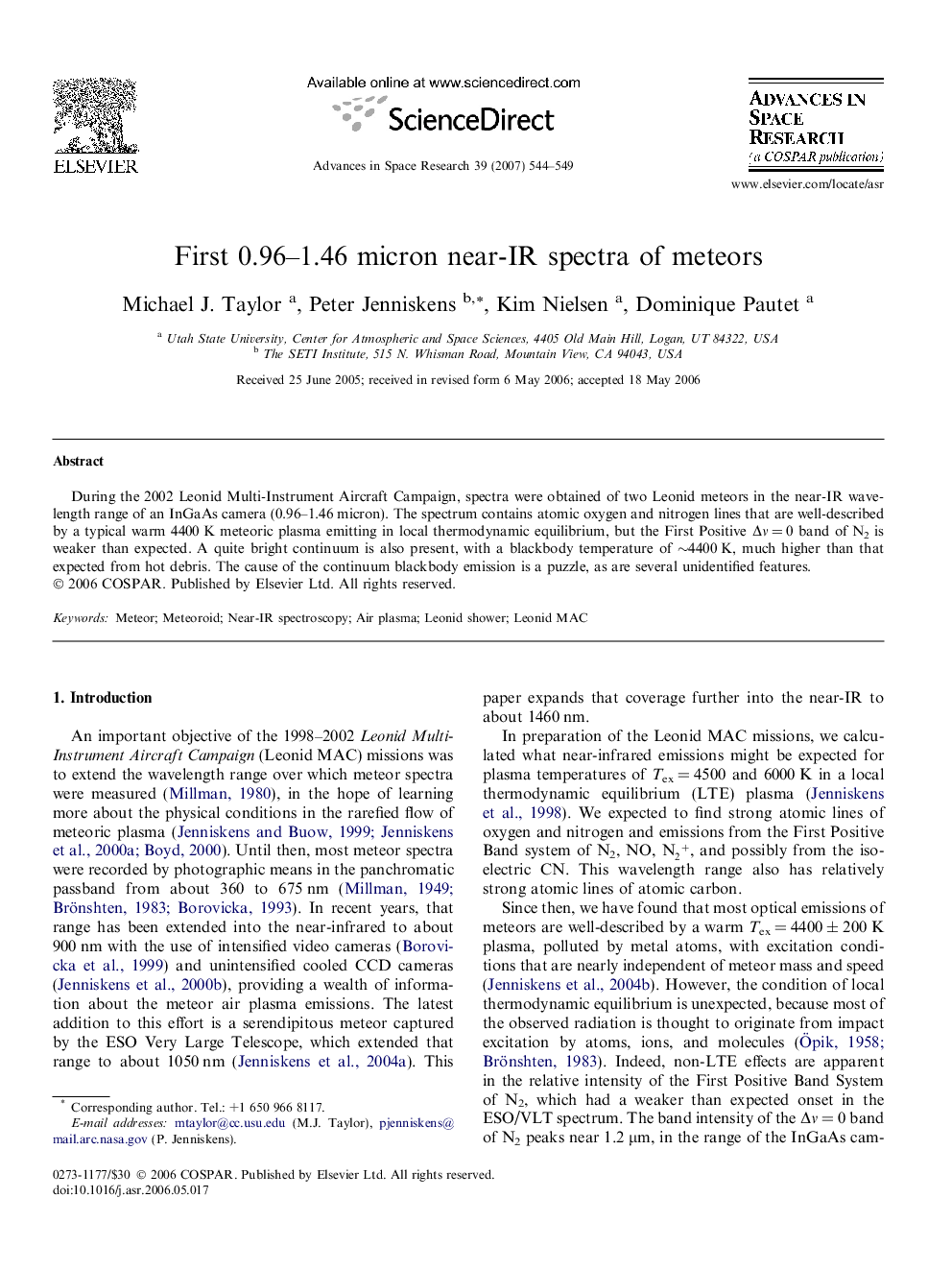| Article ID | Journal | Published Year | Pages | File Type |
|---|---|---|---|---|
| 1766878 | Advances in Space Research | 2007 | 6 Pages |
Abstract
During the 2002 Leonid Multi-Instrument Aircraft Campaign, spectra were obtained of two Leonid meteors in the near-IR wavelength range of an InGaAs camera (0.96–1.46 micron). The spectrum contains atomic oxygen and nitrogen lines that are well-described by a typical warm 4400 K meteoric plasma emitting in local thermodynamic equilibrium, but the First Positive Δν = 0 band of N2 is weaker than expected. A quite bright continuum is also present, with a blackbody temperature of ∼4400 K, much higher than that expected from hot debris. The cause of the continuum blackbody emission is a puzzle, as are several unidentified features.
Related Topics
Physical Sciences and Engineering
Earth and Planetary Sciences
Space and Planetary Science
Authors
Michael J. Taylor, Peter Jenniskens, Kim Nielsen, Dominique Pautet,
